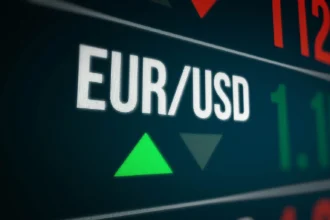TSX Futures Regain Ground Amid Trade Turmoil
On Tuesday, futures tied to Canada’s main stock index showed signs of life after a steep decline, offering a potential bounce-back opportunity for investors reeling from the volatility triggered by U.S. President Donald Trump’s latest trade actions.
As of 07:05 ET (11:05 GMT), the S&P/TSX 60 index futures rose by 16 points, or 1.2%, signaling optimism following Monday’s severe downturn.
In the previous trading session, the S&P/TSX Composite Index dropped by 334.01 points (1.4%), dragging the benchmark to a seven-month low. This sharp decline was largely attributed to escalating trade tensions fueled by Trump’s imposition of sweeping tariffs on both allies and adversaries.
Canadian Concerns: Recession Risks on the Rise
Canadian Prime Minister Mark Carney has publicly acknowledged that Trump’s aggressive tariff measures heighten the probability of a U.S. recession, which in turn could spill over into Canada’s economy. A Bank of Canada survey reinforces this view, showing a rising number of Canadian businesses anticipating a recession within the next year.
The TSX has now plunged 11.4% since reaching its record closing high on January 30, officially entering correction territory. However, the decline is still milder than the losses suffered by the U.S. S&P 500, which has seen over 10% wiped out in just the past three sessions.
Global Trade Chaos: What’s Driving the Fear?
Markets are grappling with a crucial question: Are Trump’s tariffs a permanent fixture or simply a high-stakes negotiation tool?
On Monday, President Trump stated that “both can be true,” leaving investors uncertain. While some interpret the tariffs as leverage to secure better trade deals, others fear long-term structural damage to global economic growth.
U.S. Trade Representative Jamieson Greer is set to testify before the Senate Finance Committee, revealing that nearly 50 countries have requested meetings regarding the tariffs. Nations like Argentina, Vietnam, and Israel have even hinted at reducing their own trade barriers in response.
🇺🇸 U.S. Futures Surge Despite Chaos
While Canadian markets struggle, U.S. stock index futures made a strong comeback early Tuesday:
- Dow Jones Futures: +752 points (+2.0%)
- S&P 500 Futures: +77 points (+1.5%)
- Nasdaq 100 Futures: +223 points (+1.3%)
The previous trading session on Wall Street was marked by extreme volatility, with markets swinging wildly due to conflicting reports about a potential tariff pause — which was later proven false.
The volatility drove the VIX Index (Wall Street’s “fear gauge”) to levels not seen since the COVID-19 panic in March 2020. Trading volumes also reached an 18-year high, touching 29 billion shares.
Commodities Corner: Crude Oil Holds Steady
Oil prices have taken a significant hit, falling over 14% since the tariff announcement on April 2. However, both Brent crude and WTI showed signs of stabilization:
- Brent: $64.22/barrel (flat)
- WTI: $60.77/barrel (+0.1%)
The plunge reflects investor concern that a trade-induced recession would slash global demand for energy. Some relief buying is now emerging, but upside potential remains capped until the trade outlook clears.
Gold Rebounds as Safe Haven Demand Returns
Gold prices edged higher on Tuesday after hitting a three-week low in the previous session:
- Spot Gold: $3,010.56/oz (+0.9%)
Gold dropped below $3,000 on Monday due to mass liquidation by investors trying to cover losses in equities. However, its traditional status as a safe-haven asset has brought buyers back amid growing economic uncertainty.
ING analysts noted that while gold often performs well during risk-off periods, it can be temporarily sold off during extreme cross-asset volatility.
Strategic Insights: What Should Investors Do Now?
In this high-volatility environment, traders and investors should:
- Monitor TSX key support levels – especially 19,000 and 18,500 zones
- Stay updated on U.S. tariff policy and potential global retaliation
- Diversify across defensive sectors like utilities and healthcare
- Use hedges like gold or inverse ETFs to protect downside risk
- Track VIX levels for volatility spikes signaling broader market shifts
❓ Frequently Asked Questions (FAQs)
1. Why did the TSX fall so sharply?
The drop was triggered by fears that U.S. trade tariffs could ignite a global economic recession, which would negatively affect Canada’s trade-reliant economy.
2. What is causing the rebound in TSX futures?
Some investors are buying the dip, hoping that the trade turmoil will ease. Strong U.S. futures have also lifted global sentiment.
3. Is Canada at risk of a recession?
Yes. The Bank of Canada and Prime Minister Mark Carney have both highlighted the increased risks due to potential spillover from a U.S. downturn.
4. What are the top sectors to watch in Canada?
Energy, gold mining, and defensive sectors like telecom and utilities will be in focus. Tech and consumer discretionary may remain volatile.
5. How do Trump’s tariffs impact Canadian stocks?
They reduce investor confidence and create uncertainty around exports, potentially hurting Canadian manufacturers and commodities.
6. What is the VIX, and why does it matter?
The VIX measures market volatility expectations. A high VIX indicates fear, and it usually rises when markets are under stress.
7. Is gold a good hedge in this environment?
Yes. Gold often performs well during economic uncertainty, although it may see temporary pullbacks during cross-asset selloffs.
8. What’s the difference between futures and the index?
Futures reflect market expectations for upcoming trading, while the index reflects actual stock performance.
9. How can retail investors protect themselves?
By using stop-loss orders, diversifying portfolios, and considering hedges like gold or bond ETFs.
10. Should I sell all my Canadian equities?
Not necessarily. Consider rebalancing instead of panic selling. Use volatility to reassess long-term goals.
⚠️ Disclaimer
This article is for informational and educational purposes only and does not constitute financial or investment advice. Market conditions can change rapidly, and all investments carry risk. Readers should conduct their own research and consult with a licensed financial advisor before making any investment decisions.



